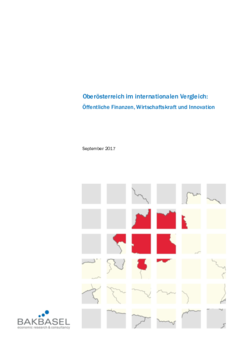International Benchmarking
The competitiveness of your region - clear, concise and comprehensible
We examine the competitiveness of regions for our clients. BAK's international benchmarking analyses the
- economic performance,
- economic structure and
- attractiveness
of a business location compared to neighbouring regions and the internationally most important competing regions.
The selection of reference and competitor regions (benchmarking sample) takes place in coordination with the client. It is based on the BAK Regional Economic Database with its more than 1900 regions. The focus is on regions of comparable size, economic structure or geographical location.
BAK's International Benchmarking Analyses answer the following questions
- How has the region developed economically?
- What are the key industries in the region? How successful are these sectors in international and national comparison?
- How attractive is the region for companies and employees in international comparison? What is the region's innovation potential in national and international comparison?
- What are the strengths and weaknesses of the Southern Upper Rhine location?
Objectives of the International Regional Benchmarking
- Supply of well-founded data and facts for positioning your region and contacting companies
- Analysis of regions instead of countries in international comparison
- Identification of strengths and weaknesses as well as potentials of the business location in an international comparison
- Creation of a basis for constant and consistent monitoring of the business location
- Provision of an analytical foundation necessary for successful economic policy strategies
- Providing a wide range of background information that can be used in day-to-day business
- Delivery of implementation-oriented analysis and results charts/reports as communicative and strategic marketing tools
Which indicators/key figures are used?
Economic performance can be illustrated and analysed using the following indicators as examples:
- GDP per capita (nominal, in EUR)
- Real GDP growth (total, per capita)
- Employment growth
- GDP decomposition in labour force participation, population development, hourly productivity
- Labour productivity
The industry structure is analysed by means of concentration measures and growth contributions from the key industries:
- Growth contributions of the most important industries/clusters in the region
- Contributions to growth of selected key industries in an international comparison
- Share and growth of highly productive sectors in international comparison
First-class conditions are essential for the successful management of companies. As location-relevant factors, the following are usually examined:
- Continental and global accessibility
- National regulation of product and labour markets
- Taxation of companies and highly qualified persons
- Qualification of the workforce
- Ability to innovate (patent intensity, R&D expenditure, quality of universities in general and by subject)
The analyses are available as commented chart sets or as reports.
Commented Chart Set | Reports |
Informative and structured, attractive design, fully editable, including underlying data | Well-founded analyses, visually attractive, implementation-oriented format, directly usable |
User-definable samples | User-definable samples |
Delivered in PowerPoint and Excel | Delivered in Word and Excel |
Can be delivered within 3 weeks | Can be delivered within 2 months |
For internal and external communication | For internal and external communication |

